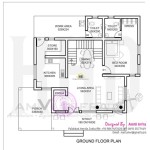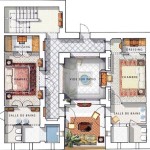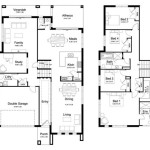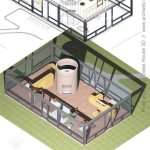Vintage Farmhouse Plans: A Guide to Authenticity and Modern Adaptation
Vintage farmhouse plans represent a significant resource for individuals seeking to build or renovate a home imbued with the charm and practicality of a bygone era. These plans, often dating back to the late 19th and early 20th centuries, offer a glimpse into the architectural styles and living arrangements prevalent during that period. Understanding the nuances of these plans is crucial for achieving an authentic farmhouse aesthetic while incorporating modern amenities and building codes.
The appeal of vintage farmhouse plans lies in their inherent connection to the land, emphasizing simplicity, functionality, and a welcoming atmosphere. Features such as large porches, natural light, and open floor plans contribute to the enduring popularity of this architectural style. However, adapting vintage plans for contemporary living requires careful consideration and a thorough understanding of both the historical context and current building standards.
Key Point 1: Understanding the Historical Context of Vintage Farmhouse Plans
To effectively utilize vintage farmhouse plans, it is essential to understand the historical context in which they were originally created. Farmhouses of the late 19th and early 20th centuries were designed to meet the specific needs of agricultural families. These needs included ample space for food storage, large kitchens for canning and preserving, and practical layouts that facilitated both indoor and outdoor work.
The architectural styles varied regionally, reflecting the available building materials and local climate conditions. For example, in the Midwest, farmhouses often featured simple, rectangular designs with minimal ornamentation, while in the South, elaborate Victorian-inspired farmhouses with wraparound porches were more common. Identifying the regional influences on a particular set of vintage plans can inform design choices and ensure a more authentic final product.
Furthermore, the social and economic conditions of the time played a significant role in shaping farmhouse design. Limited access to electricity and plumbing meant that farmhouses were often designed to maximize natural light and ventilation. Kitchens were typically located near the back of the house to minimize the spread of cooking odors, and separate outbuildings were used for tasks such as laundry and butchering. Recognizing these historical constraints is vital for understanding the rationale behind certain design choices and for making informed decisions about adapting the plans for modern use.
Original blueprints might lack detailed information regarding insulation, modern plumbing, or electrical systems. Thus, understanding the limitations is crucial before embarking on a building or renovation project. Consulting with architects and contractors experienced in historical preservation is highly recommended to navigate these challenges effectively.
Key Point 2: Adapting Vintage Farmhouse Plans for Modern Living
While the charm of vintage farmhouse plans is undeniable, adapting them for modern living requires careful consideration of contemporary needs and building codes. Modern families typically require more bathrooms, larger closets, and open-concept living spaces, features that may not be present in original farmhouse designs.
One common adaptation involves expanding the kitchen to create a more functional and social space. Incorporating modern appliances, such as dishwashers and refrigerators, requires careful planning to ensure they blend seamlessly with the overall farmhouse aesthetic. Similarly, adding bathrooms and closet space may necessitate modifications to the original floor plan, potentially altering the exterior appearance of the house.
Integrating modern technologies, such as central heating and air conditioning, also presents a challenge. These systems require ductwork and vents, which can be difficult to conceal in a vintage farmhouse. Careful planning is essential to minimize the visual impact of these modern conveniences and maintain the historical integrity of the building.
Meeting current building codes is another critical consideration. Vintage farmhouse plans may not meet modern standards for insulation, fire safety, or accessibility. Updating the plans to comply with these codes may involve adding insulation, reinforcing structural elements, and modifying doorways and hallways to accommodate wheelchairs or other mobility aids. Obtaining the necessary permits and approvals from local building authorities is essential before beginning any construction work.
Energy efficiency is also a paramount concern for modern homeowners. Vintage farmhouses were often poorly insulated, leading to high energy consumption. Incorporating energy-efficient windows, doors, and insulation can significantly reduce energy costs and improve the comfort of the home. Additionally, exploring renewable energy options, such as solar panels, can further enhance the sustainability of a vintage farmhouse adaptation.
Key Point 3: Key Design Elements of Vintage Farmhouse Plans
Several key design elements characterize vintage farmhouse plans and contribute to their enduring appeal. These elements can be incorporated into both new construction and renovation projects to create an authentic farmhouse aesthetic.
Porches: Large, welcoming porches are a defining feature of vintage farmhouses. These porches provide a space for relaxation, socialization, and enjoying the outdoors. They can be incorporated into a new farmhouse design or added to an existing structure to enhance its farmhouse character.
Natural Light: Maximizing natural light was a priority in vintage farmhouse design. Large windows, often strategically placed to capture sunlight throughout the day, help to create a bright and airy interior. Incorporating skylights or transoms can further enhance natural light levels.
Open Floor Plans: While not always present in original farmhouse plans, open floor plans are a common adaptation for modern living. Combining the kitchen, dining room, and living room into a single, open space creates a more social and functional environment. Maintaining clear sight lines and incorporating natural dividers, such as columns or archways, can help to define different areas within the open space.
Natural Materials: Using natural materials, such as wood, stone, and brick, is essential for achieving an authentic farmhouse look. Exposed beams, hardwood floors, and stone fireplaces can add warmth and character to a farmhouse interior. Reclaimed materials, such as salvaged wood or antique hardware, can further enhance the historical feel of the building.
Simple Ornamentation: Vintage farmhouse design emphasizes simplicity and functionality over elaborate ornamentation. Clean lines, minimal trim, and understated details are characteristic of this style. Avoiding excessive ornamentation and focusing on the quality of the materials can help to create a timeless and elegant farmhouse.
Color Palette: The color palette typically associated with vintage farmhouses is characterized by neutral tones, such as white, cream, and beige. These colors create a calm and inviting atmosphere and provide a backdrop for showcasing natural materials and antique furnishings. Pops of color can be incorporated through textiles, artwork, and accessories.
In addition to these key design elements, other features such as shiplap walls, apron-front sinks, and barn doors can further enhance the farmhouse aesthetic. Careful attention to detail and a commitment to using authentic materials are essential for creating a truly successful vintage farmhouse design.
Careful planning and execution are essential to successfully implement vintage farmhouse plans in a modern context. By understanding the historical context, adapting the plans to contemporary needs, and incorporating key design elements, individuals can create homes that are both beautiful and functional, blending the charm of the past with the conveniences of the present.

1900s Farmhouse Plans Victorian House Floor

From Radford American Homes Design 111 Farmhouse Floor Plans Old House

7 Gorgeously Old Fashioned Farmhouse Plans

Wardway 1923 Pg74 House Plans With Pictures Craftsman Sims

Pin By David I On Houses Farmhouse Floor Plans Country Style House Vintage

Vintage House Plans Farmhouse 6

11 Amazing Rustic Farmhouse Plans For Tight Budget Craft Mart

22 Vintage Ranch Floor Plans Ideas House

Favorite Farmhouse Plans With Porches Old Salt Farm

Vintage House Plans Farmhouse 5 Colonial








